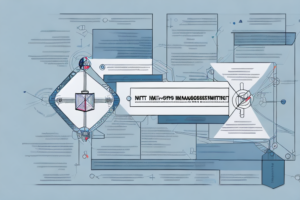What is system interconnections in RMF?
7 min read
A computer system with interconnected components
In today’s ever-evolving technological landscape, the importance of ensuring the security of interconnected systems cannot be overstated. This is where the concept of system interconnections in Risk Management Framework (RMF) comes into play. In this article, we will explore the basics of RMF, the significance of system interconnections within it, and the benefits of implementing it. We will also discuss the various components of system interconnections, the role of risk management, common challenges faced during the implementation process, and best practices for successful implementation. Additionally, we will delve into how to assess and manage risks associated with system interconnections, key considerations for maintaining effective interconnections, and look into real-life examples of successful implementation. Finally, we will identify future trends and developments in the field before concluding with the vital importance of prioritizing effective implementation of system interconnections within RMF.
Understanding the basics of RMF
RMF is a structured approach to managing cybersecurity risks associated with the use of information systems by the federal government. It is designed to provide a consistent, repeatable methodology for organizations to manage information security, privacy, and compliance risks. The framework is based on a cyclical process, consisting of six steps:
- Categorize Information Systems
- Select Security Controls
- Implement Security Controls
- Assess Security Controls
- Authorize Information Systems
- Monitor Security Controls
RMF provides a comprehensive and systematic approach to information security management. It is critical to ensure the security of interconnected systems within RMF to maintain the overall integrity of the framework.
One of the key benefits of RMF is that it allows organizations to tailor their security controls to their specific needs. This means that organizations can select the controls that are most appropriate for their information systems, based on factors such as the sensitivity of the data they handle and the potential impact of a security breach.
Another important aspect of RMF is that it emphasizes the importance of ongoing monitoring and assessment of security controls. This helps organizations to identify and address any vulnerabilities or weaknesses in their systems, and to ensure that their security measures remain effective over time.
The importance of system interconnections in RMF
System interconnections refer to the interconnection of information systems, and the sharing of information between them. The seamless exchange of information between interconnected systems is critical for the successful operation of many organizations. However, it also introduces security risks. RMF recognizes that interconnected systems can lead to a domino effect on overall information security, making it integral to establish secure interconnections.
Secure interconnections are established through the implementation of security controls that ensure the confidentiality, integrity, and availability of information exchanged between interconnected systems. These controls include access controls, encryption, and network segmentation. RMF emphasizes the importance of continuous monitoring and assessment of system interconnections to identify and address any potential security vulnerabilities. By establishing secure interconnections, organizations can ensure the seamless exchange of information while minimizing the risk of security breaches.
Benefits of implementing system interconnections in RMF
The benefits of implementing system interconnections within RMF are multifold. Firstly, it helps to ensure the overall security of information systems within the organization. It also facilitates the seamless integration of multiple systems, which is crucial for the smooth operation of an organization. Additionally, it promotes uniformity and consistency in security measures, making it easier for organizations to manage their cybersecurity risks effectively.
Moreover, system interconnections in RMF can lead to cost savings for organizations. By integrating multiple systems, organizations can reduce the need for duplicate hardware and software, which can be expensive to maintain. Additionally, system interconnections can improve the efficiency of information sharing and collaboration between different departments and teams within an organization, leading to increased productivity and better decision-making.
Components of system interconnections in RMF
There are various components of system interconnections within RMF, including Interconnection Security Agreement (ISA), System Security Plan (SSP), MOUs or MOAs, and Data-flow Diagrams (DFD). These components are critical to establishing and maintaining a secure and reliable interconnection between systems.
The Interconnection Security Agreement (ISA) is a formal agreement between two or more organizations that outlines the security requirements for the interconnection of their systems. The ISA defines the security controls that must be implemented and maintained to ensure the confidentiality, integrity, and availability of the information being exchanged.
The System Security Plan (SSP) is a document that outlines the security controls and safeguards that are in place to protect a system. The SSP provides a comprehensive overview of the security posture of the system and is used to ensure that the system meets the security requirements of the organization and any applicable regulations or standards.
The role of risk management in system interconnections in RMF
Risk management is integral to system interconnections in RMF. It involves identifying potential risks associated with the interconnection of systems, assessing those risks, and implementing appropriate security measures to mitigate them. An effective risk management approach ensures the security and reliability of interconnected systems.
One of the key challenges in risk management for system interconnections is the constantly evolving nature of technology and the associated risks. As new technologies emerge and existing ones are updated, the potential risks and vulnerabilities of interconnected systems also change. Therefore, it is important for organizations to regularly review and update their risk management strategies to ensure they remain effective in mitigating the latest threats.
Common challenges faced when implementing system interconnections in RMF
Implementing system interconnections within RMF is a complex process that often entails several challenges. These challenges may include lack of coordination between stakeholders, insufficient knowledge or expertise on the components of system interconnections, a lack of clear communication, and difficulty in assessing and mitigating risks. Organizations must be aware of these challenges and work proactively to avoid them.
Another common challenge faced when implementing system interconnections in RMF is the lack of standardization across different systems. Different systems may have different protocols, interfaces, and security requirements, which can make it difficult to establish a seamless connection between them. This can lead to compatibility issues, data loss, and security vulnerabilities. To overcome this challenge, organizations must ensure that all systems adhere to a common set of standards and protocols, and that they are regularly updated and maintained.
Best practices for successful implementation of system interconnections in RMF
There are various best practices for successful implementation of system interconnections within RMF. These may include conducting a comprehensive assessment of potential risks before implementation, establishing clear communication channels between stakeholders, ensuring that all parties involved are aware of their roles and responsibilities, and making timely adjustments based on feedback and assessments.
Another important best practice for successful implementation of system interconnections in RMF is to prioritize security measures. This includes implementing strong access controls, regularly monitoring and updating security protocols, and ensuring that all systems and devices are properly configured and patched. Additionally, it is important to have a plan in place for responding to security incidents and to regularly test and evaluate the effectiveness of security measures.
How to assess and manage risks associated with system interconnections in RMF
The assessment and management of risks associated with system interconnections require a systematic and structured approach. A risk management plan should encompass identification, analysis, evaluation, and response to risks. Regular risk assessments and updates to the system security plan are also essential for maintaining effective system interconnections.
One important aspect of assessing and managing risks associated with system interconnections is to establish clear communication channels between all parties involved. This includes not only the technical teams responsible for the systems, but also the business owners and stakeholders who may be impacted by any potential risks. Regular meetings and updates should be scheduled to ensure that everyone is aware of the risks and the steps being taken to mitigate them.
Another key factor in managing risks associated with system interconnections is to stay up-to-date with the latest security standards and best practices. This includes keeping abreast of any new threats or vulnerabilities that may arise, as well as implementing any necessary updates or patches to the systems. Regular training and education for all personnel involved in the system interconnections can also help to ensure that everyone is aware of the risks and how to respond to them.
Key considerations for maintaining effective system interconnections in RMF
Organizations must consider several factors to maintain effective system interconnections in RMF. These include continuous updates to security measures, monitoring for vulnerabilities and threats continuously, ensuring compliance with regulatory requirements, and making timely adjustments based on assessments and feedback.
Real-life examples of successful implementation of system interconnections in RMF
Several organizations have implemented successful system interconnections within RMF, enabling secure and effective communication and information exchange between systems. These include the Department of Defense (DoD), National Aeronautics and Space Administration (NASA), and the Department of Homeland Security (DHS), among others. These organizations serve as examples of the successful implementation of system interconnections within RMF.
Future trends and developments in the field of system interconnections in RMF
In the future, we can expect to see technological advancements that simplify and streamline the implementation of system interconnections in RMF. These may include automated risk assessments, enhanced communication tools, and more advanced security measures. The field of RMF is continually evolving, and it is essential for organizations to stay up-to-date on new trends and developments to maintain effective security.
Conclusion: The importance of prioritizing and implementing effective system interconnections in RMF
In conclusion, system interconnections are vital components within RMF, ensuring the security, reliability, and seamless integration of interconnected systems. Implementing effective system interconnections is a complex process that requires proactive risk management and the employment of best practices. Organizations must continue to prioritize the effective implementation of system interconnections and remain vigilant in maintaining their security.



